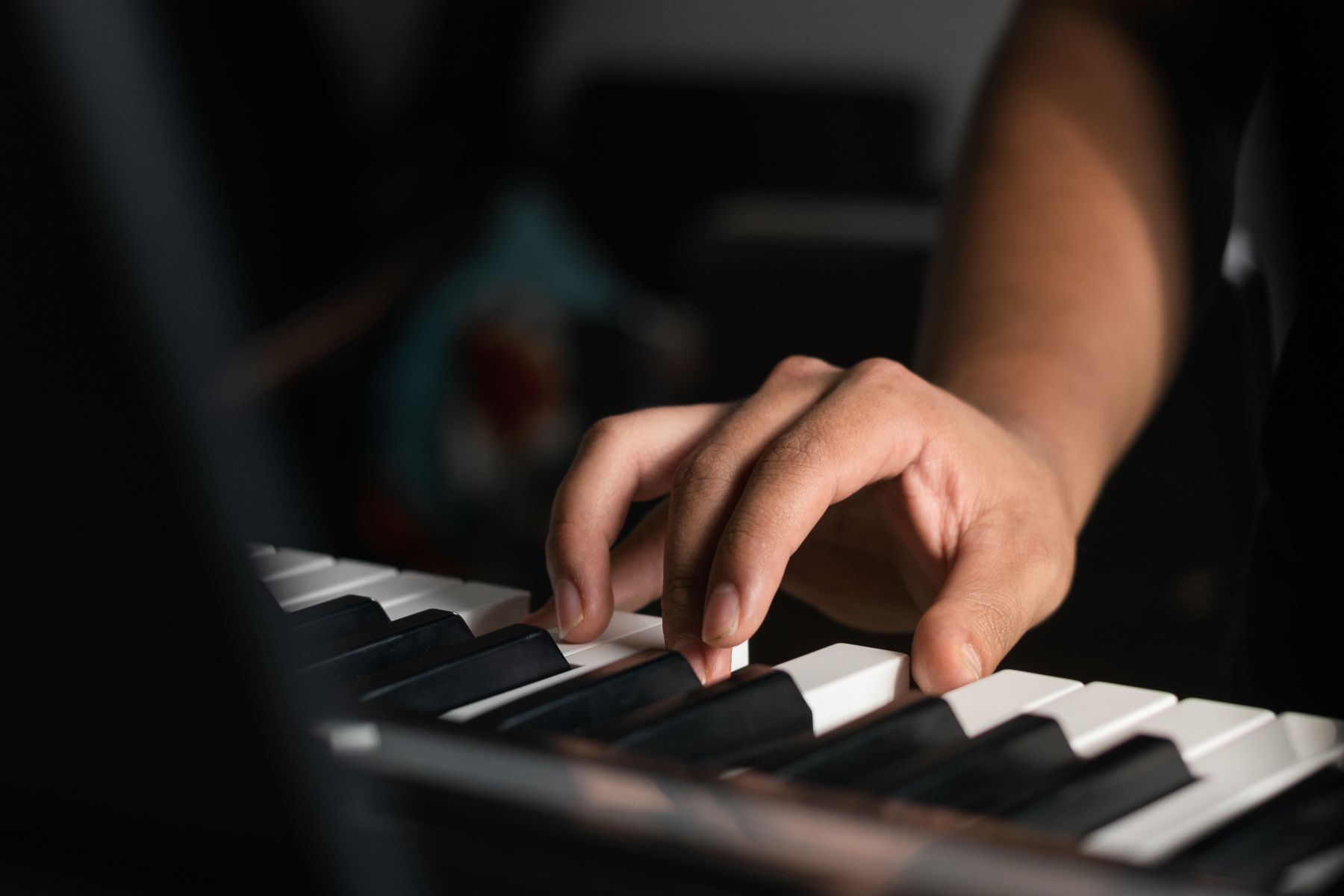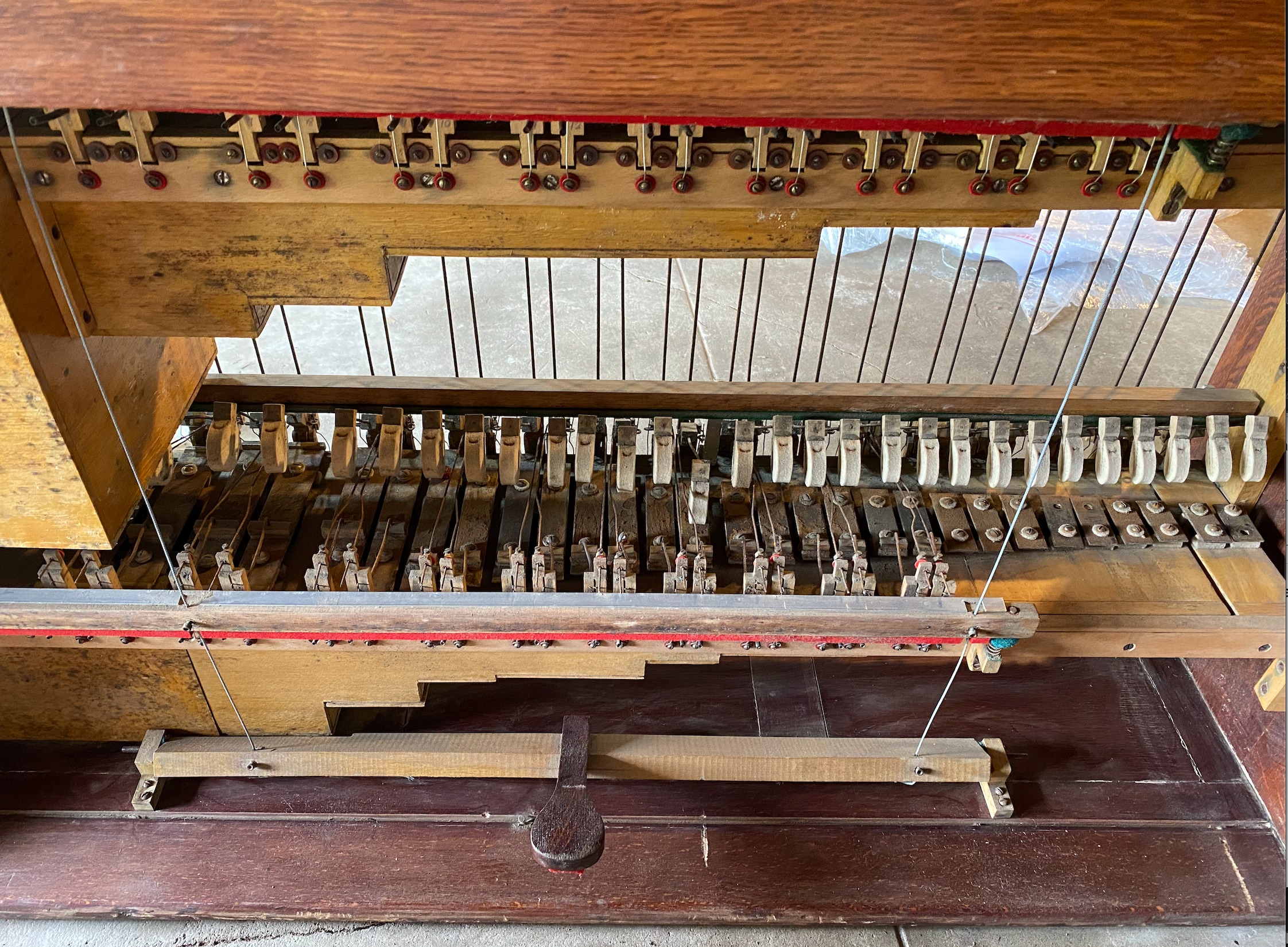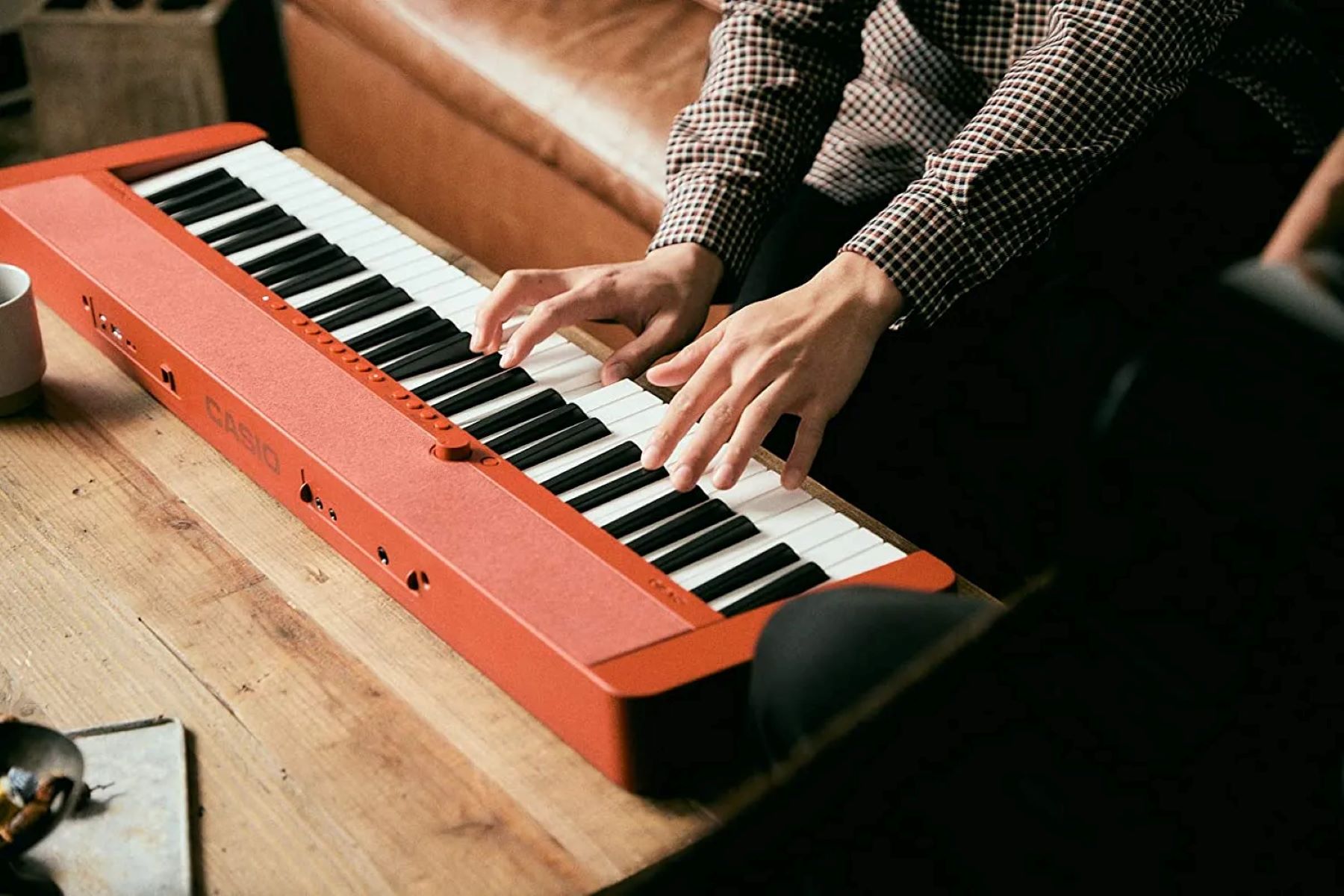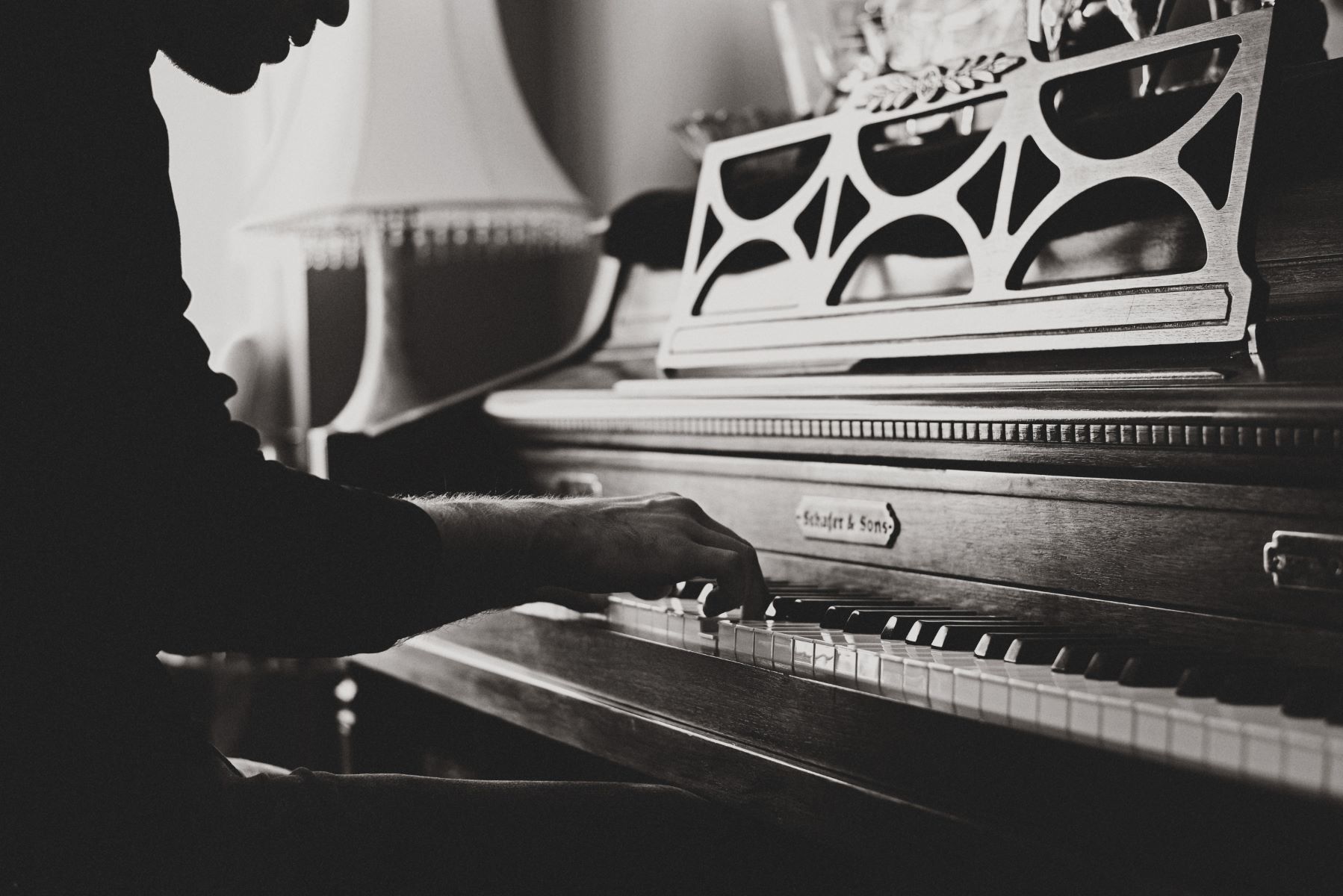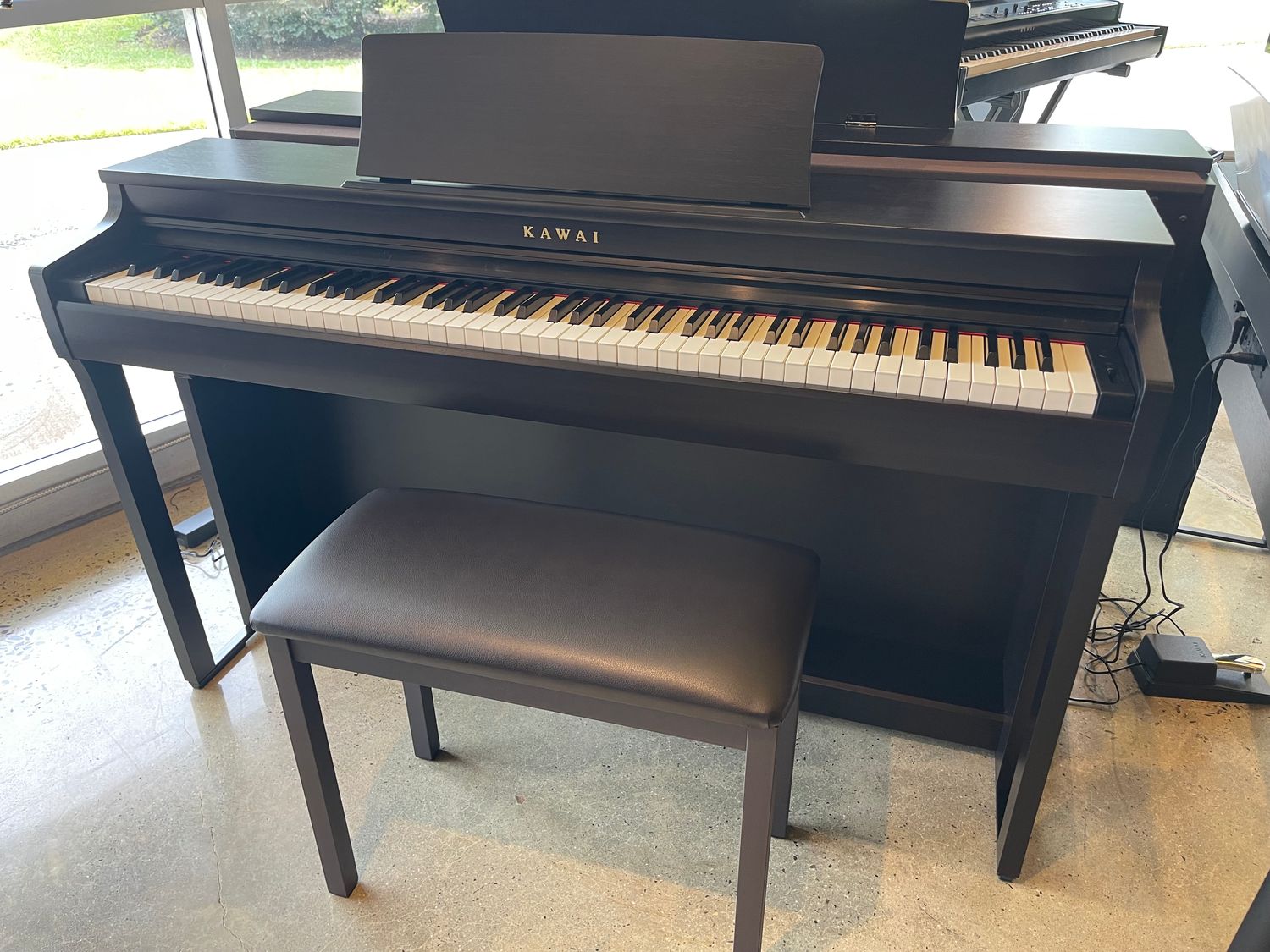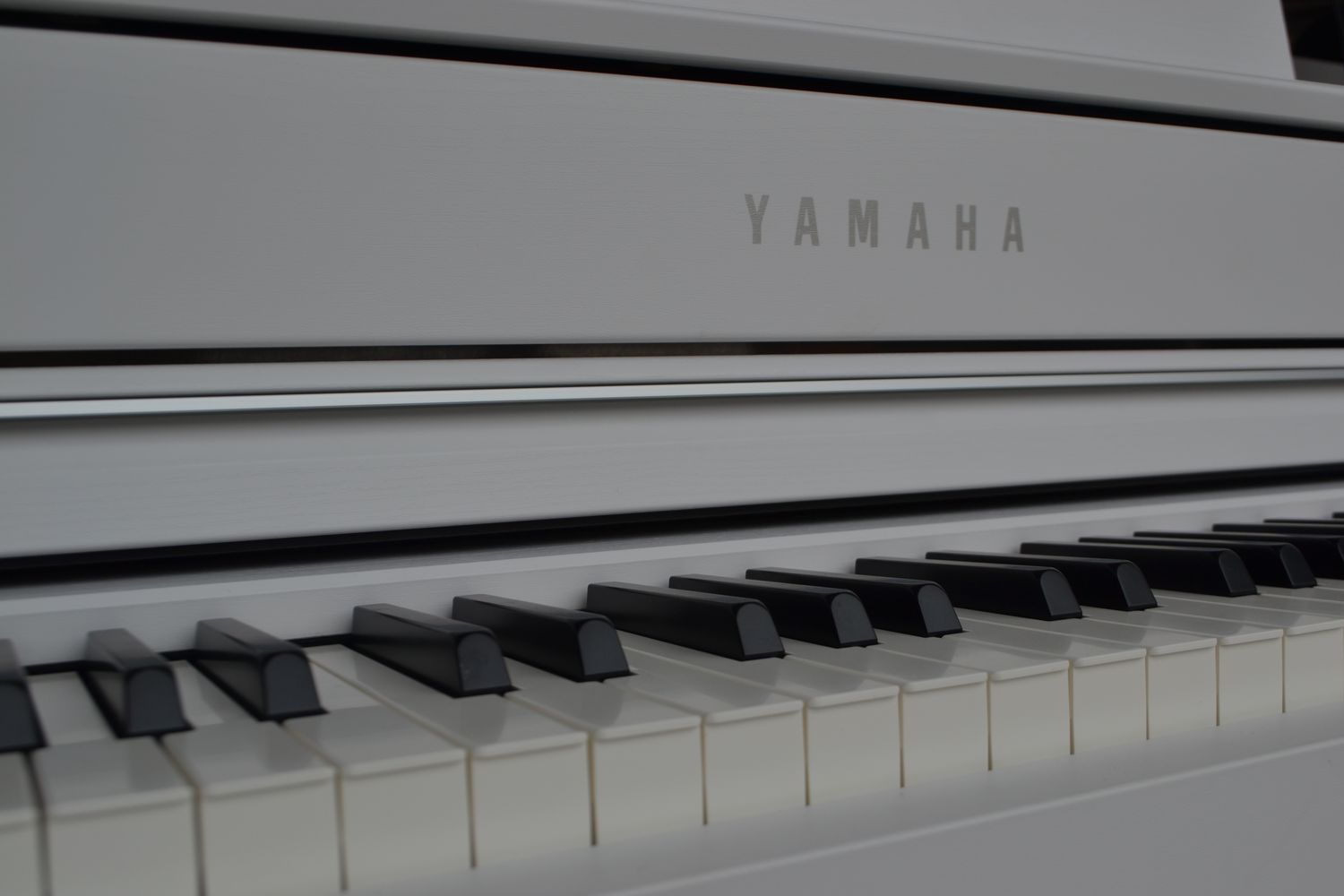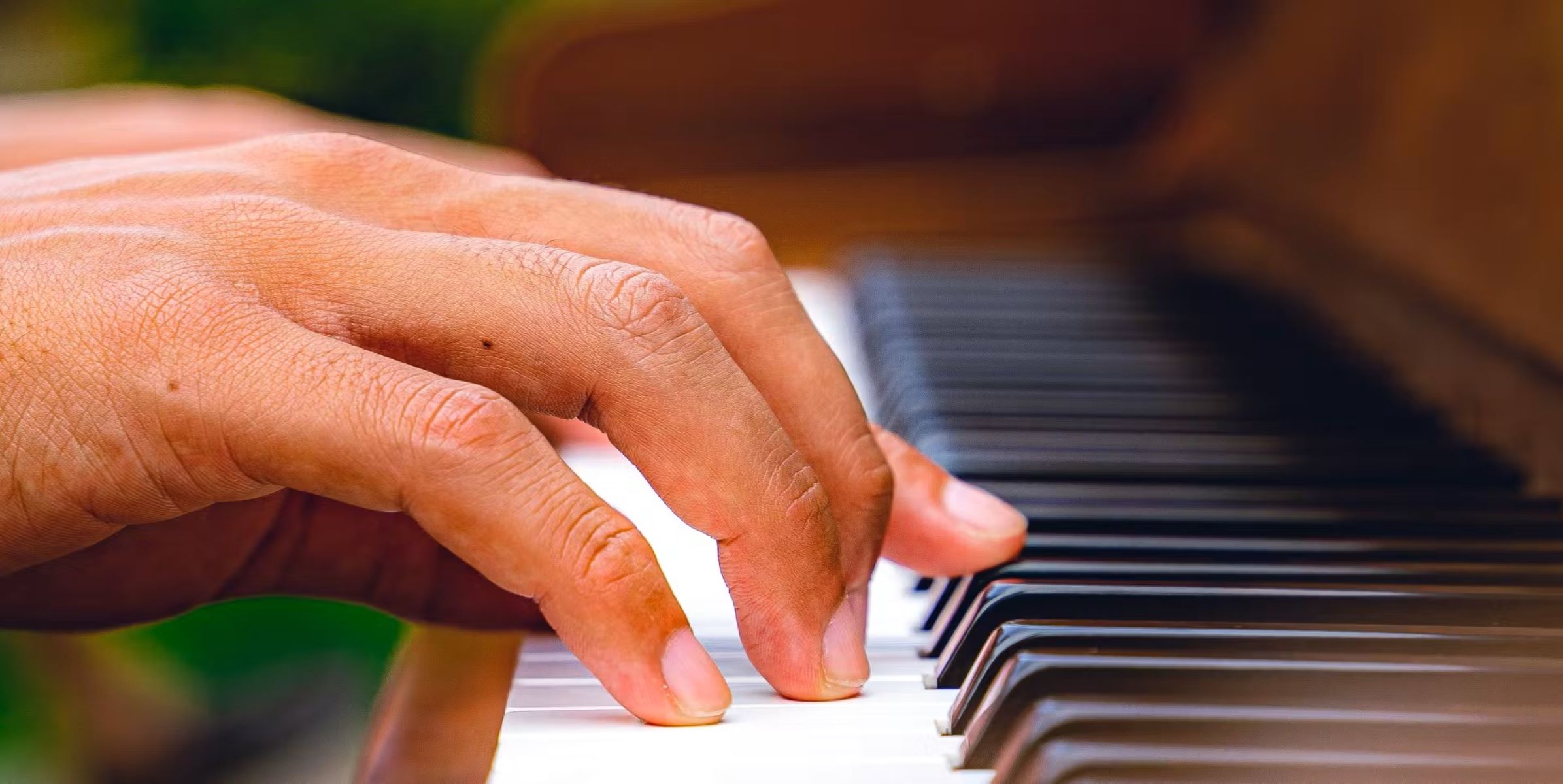Home>Instruments>Piano>What Is An Upright Piano
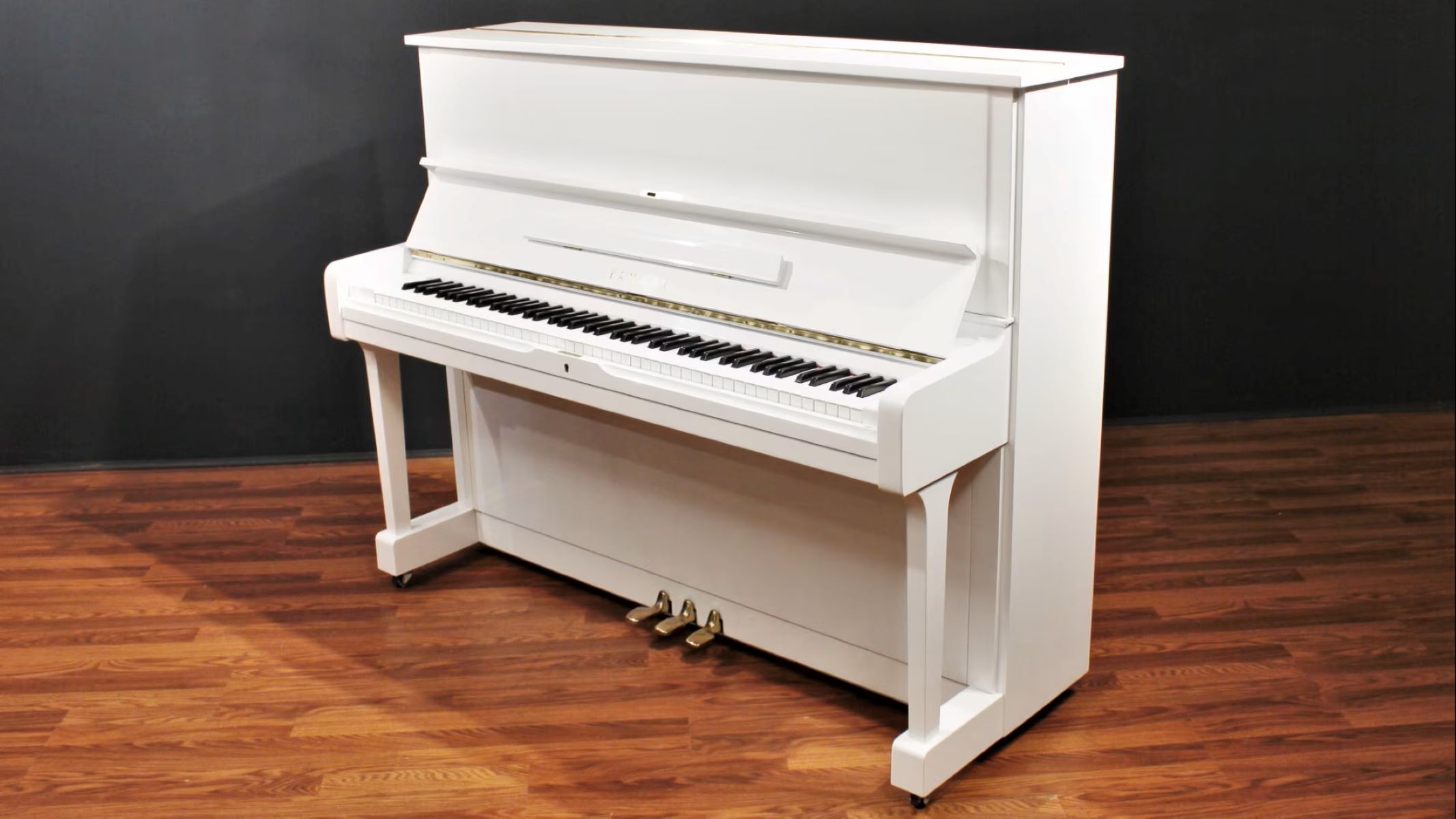

Piano
What Is An Upright Piano
Published: February 10, 2024
Learn about the features and benefits of upright pianos. Discover why an upright piano is a great choice for your musical needs. Explore more about pianos here.
(Many of the links in this article redirect to a specific reviewed product. Your purchase of these products through affiliate links helps to generate commission for AudioLover.com, at no extra cost. Learn more)
Table of Contents
Introduction
Welcome to the world of upright pianos! These majestic instruments have been enchanting music enthusiasts for centuries with their rich history, versatile sound, and timeless elegance. Whether you're a seasoned pianist, a budding musician, or simply an admirer of classical music, understanding the allure of upright pianos is a journey worth embarking on.
Upright pianos, also known as vertical pianos, stand as a testament to the enduring legacy of musical craftsmanship. Their upright design sets them apart from grand pianos, offering a distinctive charm and practicality suitable for a wide range of musical settings. From intimate home concerts to grand stages, upright pianos have carved their niche in the world of music, captivating audiences and performers alike.
As we delve into the intricacies of upright pianos, we'll uncover the captivating history behind these instruments, explore their unique anatomy, delve into the various types available, and unravel the secrets behind their captivating sound and tone. Furthermore, we'll unravel the essential maintenance and care practices that ensure the longevity and pristine condition of these cherished instruments.
Whether you're considering bringing an upright piano into your home, seeking to deepen your appreciation for these musical marvels, or simply intrigued by the world of pianos, this comprehensive guide aims to be your trusted companion. Join us as we embark on a melodic journey through the enchanting realm of upright pianos, where tradition meets innovation and music resonates with timeless allure.
History of Upright Pianos
The history of upright pianos is a captivating tale that intertwines musical innovation, craftsmanship, and cultural evolution. The roots of the upright piano can be traced back to the late 18th century, a time marked by significant advancements in piano construction and design. It was during this era that the demand for more compact yet resonant pianos grew, leading to the development of the vertical or upright piano.
One of the earliest iterations of the upright piano can be attributed to the renowned piano maker, Johann Schmidt. In 1805, Schmidt introduced the "Cottage Pianoforte," a compact and vertically oriented piano that laid the groundwork for the modern upright piano. This innovative design paved the way for a new era of piano manufacturing, allowing households and smaller venues to embrace the musical prowess of the piano within a space-efficient framework.
Throughout the 19th and 20th centuries, the popularity of upright pianos soared, becoming a staple in homes, schools, and performance venues around the world. Their adaptability and accessibility made them a cherished centerpiece of musical expression, enabling aspiring pianists and seasoned musicians to hone their craft and share their melodies with audiences of all sizes.
Notably, the evolution of upright pianos mirrored the advancements in technology and craftsmanship, leading to enhanced tonal quality, improved action, and refined aesthetics. The integration of pedals, soundboard innovations, and string technologies further elevated the capabilities of upright pianos, cementing their status as versatile and beloved instruments.
Today, the legacy of upright pianos endures, captivating enthusiasts with their rich heritage and timeless appeal. From the classic elegance of vintage upright pianos to the modern innovations that continue to shape their design, these instruments stand as a testament to the enduring artistry and ingenuity of piano makers throughout history.
As we immerse ourselves in the history of upright pianos, we gain a profound appreciation for the cultural significance and musical impact of these remarkable instruments, each resonating with the echoes of centuries past while inspiring the melodies of the future.
Anatomy of an Upright Piano
Understanding the intricate anatomy of an upright piano unveils the harmonious fusion of artistry and engineering that defines these musical marvels. From the graceful curves of the cabinet to the inner workings that bring forth captivating melodies, each component plays a pivotal role in shaping the instrument’s character and sound.
1. Cabinet: The cabinet of an upright piano not only serves as a visually striking exterior but also contributes to the instrument’s resonance and tonal qualities. Crafted from a variety of woods, the cabinet’s design can range from traditional to contemporary, reflecting the aesthetic preferences of different eras and cultures.
2. Keyboard: The keyboard of an upright piano comprises the familiar arrangement of keys, each representing a specific musical note. The keys are meticulously crafted to provide a responsive touch, allowing pianists to convey nuanced expressions through their playing.
3. Action Mechanism: Nestled beneath the keys, the action mechanism of an upright piano translates the pianist’s keystrokes into the striking of the strings, creating the melodic tapestry that defines piano music. This intricate system of levers, hammers, and dampers embodies the precision and complexity of piano craftsmanship.
4. Strings and Soundboard: The strings and soundboard form the heart of the piano’s sonic identity. When the hammers strike the strings, the vibrations are amplified by the soundboard, producing the rich and resonant tones that reverberate throughout the instrument.
5. Pedals: Upright pianos feature pedals that enable pianists to manipulate the instrument’s sound and sustain, adding expressive depth to their performances. The pedals play a crucial role in shaping the dynamics and character of the music produced.
By unraveling the anatomy of an upright piano, we gain a profound appreciation for the meticulous craftsmanship and ingenuity that converge to create a symphony of form and function. Each element harmonizes with the next, culminating in an instrument that not only captivates the senses but also empowers musicians to channel their creativity and emotion through its timeless melodies.
Types of Upright Pianos
Upright pianos encompass a diverse array of types, each distinguished by unique features, dimensions, and tonal characteristics. Understanding the various types of upright pianos provides insight into the nuanced options available to musicians and enthusiasts, catering to a spectrum of preferences and musical requirements.
1. Spinet Pianos: Spinet pianos are the most compact type of upright pianos, typically standing at around 36 to 40 inches in height. Their diminutive size makes them well-suited for smaller living spaces and practice rooms, offering a balance of functionality and space efficiency.
2. Console Pianos: Console pianos are slightly taller than spinet pianos, ranging from 40 to 43 inches in height. This increased height allows for longer strings and a larger soundboard, resulting in enhanced tonal depth and resonance compared to spinet pianos.
3. Studio Pianos: Studio pianos represent a popular choice for both home and professional use, standing at approximately 44 to 48 inches tall. Their robust construction and expansive sound production make them ideal for practice, performance, and recording settings, catering to the discerning needs of musicians.
4. Upright Grand Pianos: Upright grand pianos, also known as upright concert pianos, offer a commanding presence and exceptional sound projection. With a height ranging from 50 to 60 inches or more, these majestic instruments deliver a concert-worthy performance while conserving valuable floor space.
Each type of upright piano embodies distinct attributes that cater to varying musical aspirations and spatial considerations. Whether seeking a compact practice instrument or a commanding centerpiece for musical expression, the diverse range of upright piano types ensures that musicians can find the perfect match for their artistic endeavors.
Sound and Tone of Upright Pianos
The sound and tone of upright pianos encapsulate a symphony of resonance, depth, and timbre, shaping the musical narratives that unfold with each keystroke. While grand pianos are celebrated for their expansive sound projection, upright pianos possess a distinct sonic identity that marries intimacy with expressive versatility.
Upright pianos are revered for their ability to deliver nuanced and emotive performances, characterized by a warm and balanced tonal palette. The compact yet resonant design of upright pianos contributes to their distinctive sound, offering a captivating blend of clarity, richness, and dynamic range.
One of the defining features of upright pianos is their vertical string arrangement, which influences the instrument’s tonal characteristics. This configuration imbues upright pianos with a focused and direct sound projection, allowing for precise articulation and expressive phrasing across the musical register.
Furthermore, the soundboard and cabinet design of upright pianos play a pivotal role in shaping their tonal signature. The resonance and reverberation generated within the instrument’s compact frame yield a captivating depth of sound, inviting pianists to explore a spectrum of emotions and musical nuances.
From the mellow warmth of the bass notes to the crystalline clarity of the treble range, upright pianos offer a diverse sonic landscape that adapts to a myriad of musical genres and playing styles. Whether interpreting classical compositions, jazz standards, or contemporary melodies, the expressive capacity of upright pianos resonates with both performers and audiences, forging an intimate connection through the power of sound.
Embracing the sound and tone of upright pianos is an immersive journey that unveils the instrument’s capacity for evocative storytelling and sonic expression. As the melodies unfurl and the harmonies intertwine, the soulful resonance of upright pianos transcends mere notes, inviting listeners into a world of musical enchantment and emotional resonance.
Maintenance and Care of Upright Pianos
Ensuring the longevity and pristine condition of an upright piano entails a harmonious blend of attentive maintenance and diligent care practices. By nurturing the instrument with conscientious upkeep, pianists and enthusiasts can safeguard its performance, aesthetics, and structural integrity for generations to come.
Regular Tuning: Upright pianos benefit from regular tuning to maintain their optimal pitch and tonal balance. Scheduling professional tunings at least twice a year, or as recommended by a piano technician, mitigates the effects of environmental changes and playing frequency, preserving the instrument’s sonic integrity.
Climate Control: Maintaining a stable and moderate environment is essential for the well-being of an upright piano. Exposure to extreme humidity, temperature fluctuations, or direct sunlight can adversely impact the instrument’s wood, strings, and action mechanism. Utilizing a hygrometer and dehumidifier, if necessary, helps regulate the piano’s surroundings.
Regular Cleaning: Gentle and consistent cleaning of the piano’s keys, cabinet, and internal components safeguards against dust accumulation and debris, preserving the instrument’s visual allure and functionality. Using soft, non-abrasive materials and specialized piano cleaning products ensures thorough yet gentle maintenance.
Action Regulation and Voicing: Periodic action regulation and voicing by a qualified technician optimize the responsiveness and tonal characteristics of an upright piano. Fine-tuning the action mechanism and voicing the hammers enhances the instrument’s touch and sound, empowering pianists to convey their musical nuances with precision.
Preventive Maintenance Inspections: Scheduling routine inspections by a skilled piano technician allows for proactive identification and resolution of potential issues, safeguarding the piano against structural wear, component fatigue, and performance inconsistencies.
Professional Restoration and Repair: When addressing significant wear, aging components, or performance concerns, entrusting the piano to experienced technicians for restoration and repair ensures meticulous attention to detail and the preservation of its historical and sonic legacy.
By embracing a holistic approach to maintenance and care, pianists and enthusiasts uphold the legacy of upright pianos, nurturing these timeless instruments with the reverence they deserve. Through attentive stewardship and unwavering dedication, the melodic spirit of upright pianos continues to resonate with enduring vitality and grace.
Conclusion
The journey through the realm of upright pianos has been a melodic odyssey, unveiling the captivating history, intricate anatomy, diverse types, evocative sound, and essential care practices that define these timeless instruments. As we conclude our exploration, we are reminded of the enduring allure and cultural significance of upright pianos, each resonating with the echoes of centuries past while inspiring the melodies of the future.
Upright pianos stand as a testament to the harmonious convergence of artistry and engineering, encapsulating the ingenuity and craftsmanship of piano makers throughout history. From the compact elegance of spinet pianos to the commanding presence of upright grands, the diverse types of upright pianos cater to a spectrum of musical aspirations and spatial considerations, empowering musicians to find their perfect match.
Embracing the sound and tone of upright pianos invites us into a world of sonic enchantment, where the expressive capacity of these instruments transcends mere notes, forging an intimate connection through the power of sound. The warmth, resonance, and dynamic range of upright pianos beckon pianists and audiences alike to embark on emotive musical journeys, each keystroke weaving a tapestry of emotion and storytelling.
Amidst the captivating melodies and timeless elegance, the care and maintenance of upright pianos emerge as essential pillars of stewardship, ensuring that these cherished instruments continue to resonate with enduring vitality and grace. By nurturing upright pianos with attentive upkeep and diligent care practices, enthusiasts safeguard their performance, aesthetics, and structural integrity for generations to come.
As we bid adieu to this orchestral sojourn, the legacy of upright pianos endures as a testament to the enduring artistry, cultural resonance, and timeless allure of musical craftsmanship. Whether gracing the stages of grand concert halls, adorning the homes of enthusiasts, or inspiring the next generation of pianists, upright pianos stand as enduring beacons of musical expression and cultural heritage, inviting us to revel in their timeless melodies and embrace the harmonies of the past, present, and future.

